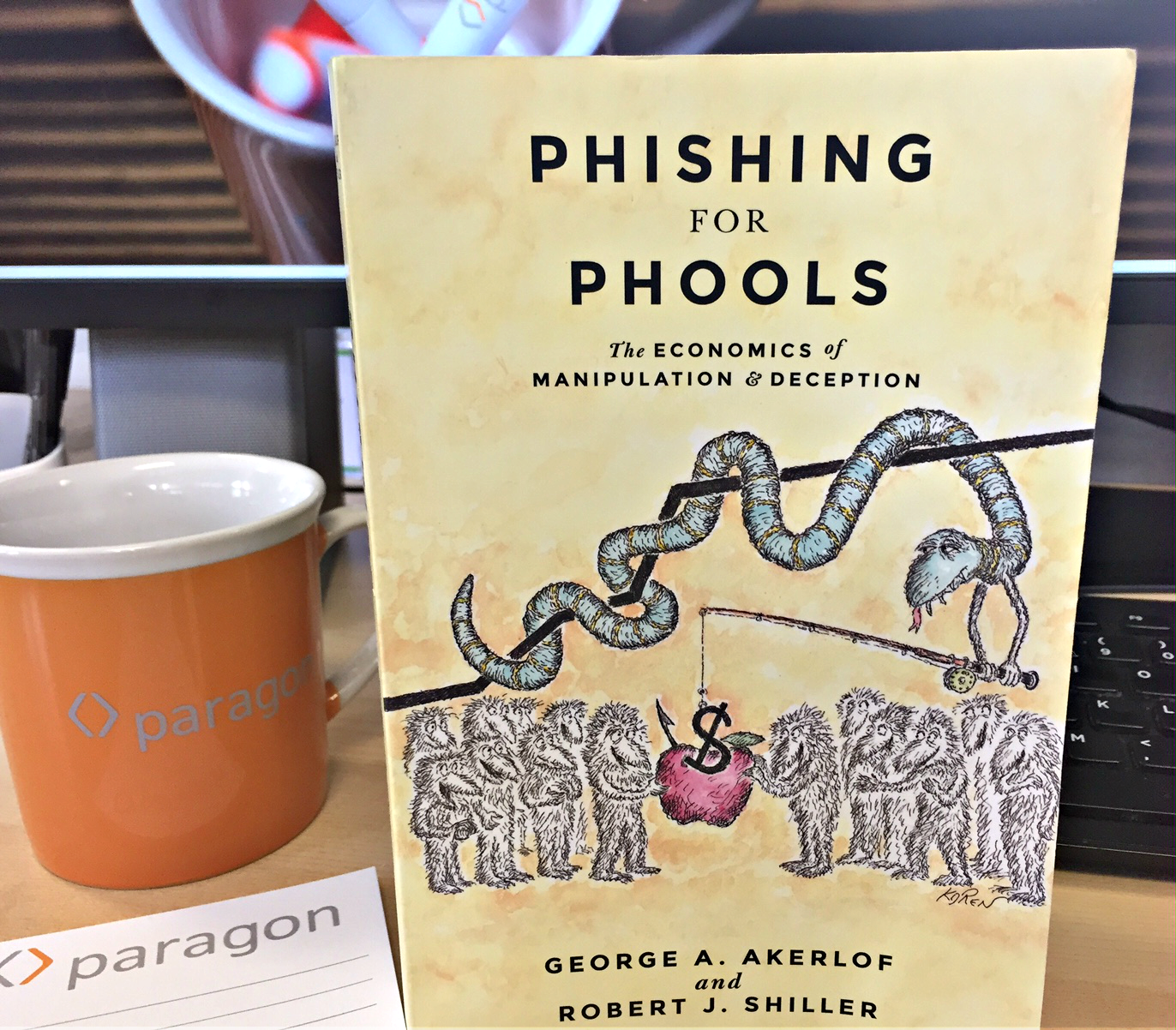Pages with P.J: Phishing for Phools
In the second installment of Pages with P.J., I take a look at Phishing for Phools: The Economics of Manipulation and Deception. Phishing for Phools outlines the theories formulated by Nobel Prize-winning economists George A. Akerlof and Robert J. Shiller about how free markets operate across various industries and that regardless of intentions of all parties, there will always be a winner and a loser. In other words, someone will always be “phished” for a “phool”.
Phishing Equilibrium
Throughout the book, Akerlof and Shiller continually emphasize that there is always an upside and a downside to free markets (i.e. the risk-reward tradeoff), and many of the theories that are outlined can be tied directly into the 2008 financial crisis. One such theory that illustrated their philosophy quite well was “phishing equilibrium.” This concept states that, on a broad level, individuals will always choose the option that offers the best possible outcome for themselves, in turn creating a balance among the rest of the field. However, despite this notion, there will always be opportunities for certain individuals to phish out the phools and find opportunities that better only themselves. Perhaps nowhere is this more evident and widespread than in the cutthroat world of financial services.
Reputation Mining
During the financial crisis, the general public failed to understand phishing equilibrium. Major financial institutions were able to exploit the ignorance of so many investors, many of whom did not fully understand the intricacies of complex financial instruments. These institutions leveraged a concept called “reputation mining.” Very simply, reputation mining dictates that if people believe you’re good at something and operate at a high level, you will not deviate from that level of productivity.
In the case of the 2008 crisis, investors took the word of financial institutions as gold when investing in products such as collateralized loan obligations (CLOs) and collateralized debt obligations (CDOs), complex derivatives that were comprised of “traunches” of debt that ultimately proved to be very unstable. Institutions phished on the inexperience and ignorance of less savvy investors. If investors couldn’t tell good securities from mediocre ones – and truly bad in some cases, as Akerlof and Shiller note – why would the institutions bother producing good ones? The reason: the institutions were taking advantage of their good reputation up to that point.
This is just one example of the many colorful illustrations the authors provide about how the theory of phishing for phools impacts our daily lives. However, what I found most interesting about this book is the fundamental element of psychology underlying each scenario. Most of the time, we don’t even realize that we’re being phished or taken advantage of, but it’s almost a daily occurrence. From advertising techniques by major corporations to making purchasing decisions at the grocery store, therein lies a component of phishing.
This is a great read for anyone who is interested in getting down to the basics of how sellers operate using various forms of deception. The book’s Malcolm Gladwell-type narrative allows it to clearly explain how the overlooked yet ubiquitous practice of phishing is applied in our professional and personal lives. I would especially recommend this book to anyone studying or targeting a career in financial services or marketing and advertising, where the positioning of your message is crucial. I think we can all remember instances where we were both the phisher as well as the phool.
Do you know of any great business books that you’d like me to review for a future Pages with PJ column? We welcome your suggestions.




Leave a comment:
You must be logged in to post a comment.